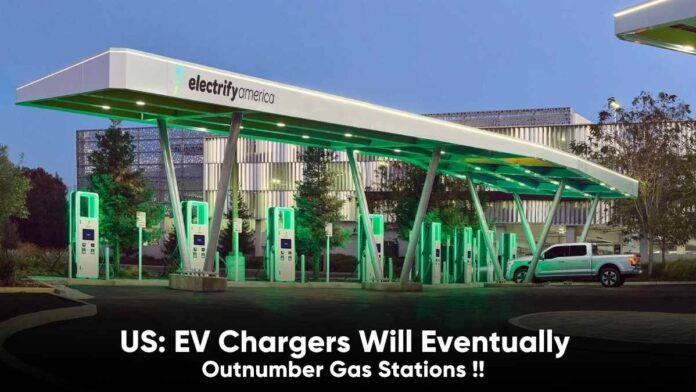We don’t really know when, but it could be by decade’s end if the Biden administration’s plans come to fruition.
It appears that the study quoted by Jerry compares individual charging stalls to full petrol stations, rather than individual pumps, rendering the data erroneous. While it is true that there are up to 150,000 unique petrol stations, each one has multiple pumps, therefore the number of pumps much outnumbers the number of EV charging ports.
This has been reflected in the storey.
If the Biden administration’s ambitions to install 500,000 charging stations by 2030 are realised, the charging station infrastructure in the United States will catch up to and surpass existing fuel stations in terms of individual pumps or charging stalls. Currently, there are between 110,000 and 150,000 petrol stations (each with numerous separate pumps) and roughly 110,000 EV charging points.
The number of gas stations has been going down for the last two decades, while increasing sales of electric vehicles has spurred constant and sometimes rapid expansion of the charging infrastructure. There are now over 2-million EVs on US roadscompared to just 16,000 a decade ago.
One major challenge ahead will be for the charging infrastructure to keep up with the rapidly increasing number of EVs in the US. Projections say that by 2030 the country will have 30-million EVs on its roads, and according to the source, that would require the construction of 478 charger stalls per day for eight years in order to meet the need.
The study also notes which states are best when it comes to the ratio of charging stalls to EVs. North Dakota, Wyoming and West Virginia are the three states where you are most likely to find an empty charging stall, while the worst are New Jersey, Hawaii and Arizona. In the last three there is a higher chance that you may find all local public chargers are taken and you may have to wait or find a way to charge the EV at home.
It is also noted that:
According to a report from the U.S. Department of Energy, the ideal ratio of EVs to charging stations is 40 Level 2 charging ports and 3.4 DC fast chargers (DCFC) per 1,000 EVs. (A DCFC charger usually has 3 ports.)
Currently, there are 41 Level 2 charging ports and 5.7 DCFC charging ports per 1,000 EVs, respectively, or about 21 EVs for every charging port.
Conversely, there are 2,514 internal combustion engine (ICE) cars per gas station.
When it comes to average range, EVs are now at a disadvantage compared to ICE vehicles, with 259 miles versus 360 miles. Because charging an EV takes longer than filling up a petrol tank, vehicles will be using more of the available charging slots for longer periods of time.
Check out the first in our new series of presentations on the US charging network, which you can find below.


